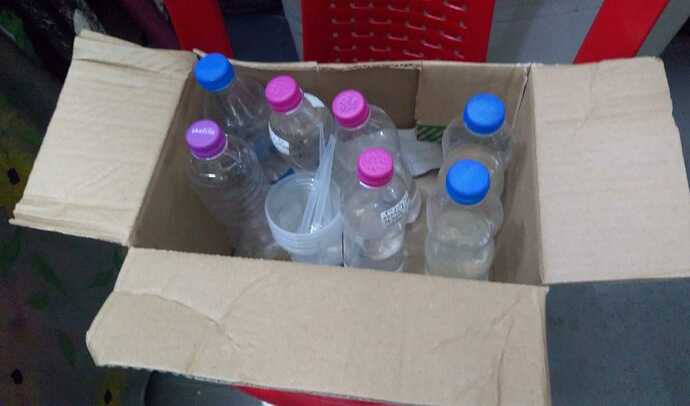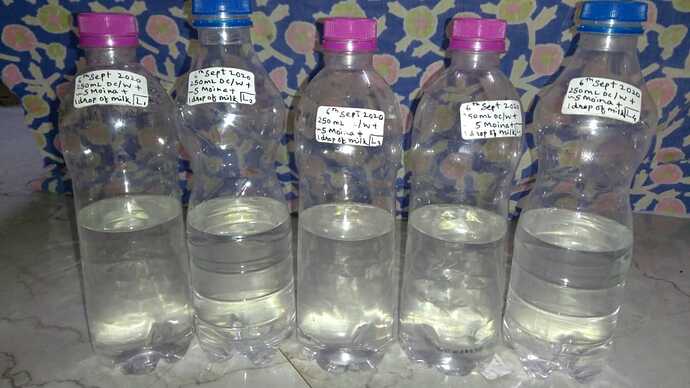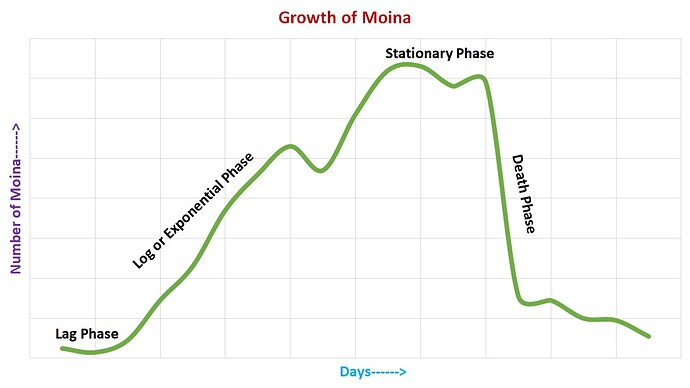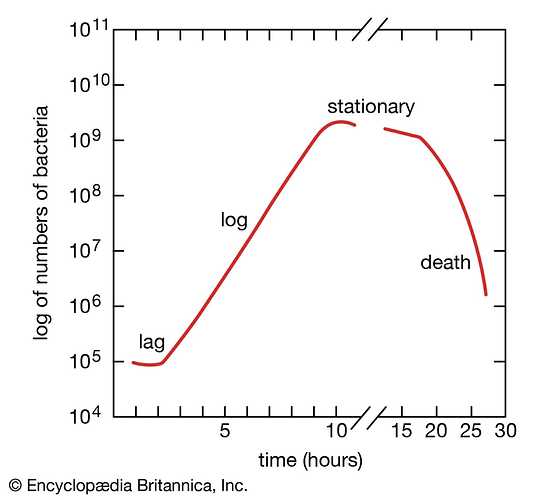CUBE Nerul, Navi Mumbai Home Lab
Update-20th June 2020
Breaking News
The fourth day has brought mixed emotions!
The Moina-Algae setup (prepared on 17th June 2020), on the fourth day, is doing well! Unexpected observations were made today. I didn’t expect to see much Moina in the control (starving) cups C1 and C2 where they aren’t being fed.
The algae bottles too are doing well!
The videos of the control and test cups and bottles below are the evidence:
Lateral/side view (with torchlight at the opposite end) of one of the test bottles A1 having ~30 Moina feeding on algae. Although the video is not much stable
The expectations have been met!.
So we can say that, as seen earlier, due to onset of some unfavourable condition, Moina had died. Here, it has not happened yet but their number has doubled in 24 hours.
Expectations: ~40 Moina on the next day.
Date of Video: 20th June 2020
Data Collector: Drishtant MK
Lateral/side view (with torchlight at the opposite end) of one of the test bottles A2 having ~40 Moina feeding on algae.
Here the expectations have met.
Their number has almost tripled (from ~15 to ~40). Good to see that they are still there and reproducing. The movement of small/juvenile Moina is also seen.
Expectations: ~50 Moina on the next day.
Date of Video: 20th June 2020
Data Collector: Drishtant MK
Lateral/side view of the test cups AM2 and AM1 in which there are ~25 and ~20 Moina (negligible) respectively. feeding on the Algal water/spores.
Both the cups have met the expectations more or less.
I think that as only algal water was added, the Moina must have fed on the algae spores and now, there is a possibility that there shall be less food remaining for them so their number can decrease and they might die leaving behind dormant eggs. Here too, many small Moina are seen.
Expectations: ~35 Moina in AM1 and AM2 the next day.
Date of Video: 20th June 2020
Data Collector: Drishtant MK
Lateral/side view of the control cups C1 and C2 showing ~25 and 20 Moina (this too, negligible) respectively. Here, nothing is added as an external feed to them.
Expectations have been met more or less.
No food (given externally) from day 1 but still surviving and reproducing too! Didn’t expect them to survive till the 4th day though.
Expectations: Two possibilities; Either ~30 Moina or less than 20 Moina the next day (as nothing is being fed)
Date of Video: 20th June 2020
Data Collector: Drishtant MK
Lateral/side view of the positive control cups PC1 and PC2 showing the movement of ~50+ Moina (negligible) in both the cups.
The cups have met the expectations.
The Moina in these cups (200mL DC/W + 1 drop of milk) are showing much faster growth if we compare it with the 250mL + 1 drop of milk culture. The latter has ~40 Moina around the 4th day usually (if started with ~10).
Expectations: ~70 Moina on the next day in both the cups.
Date of Video: 20th June 2020
Data Collector: Drishtant MK




